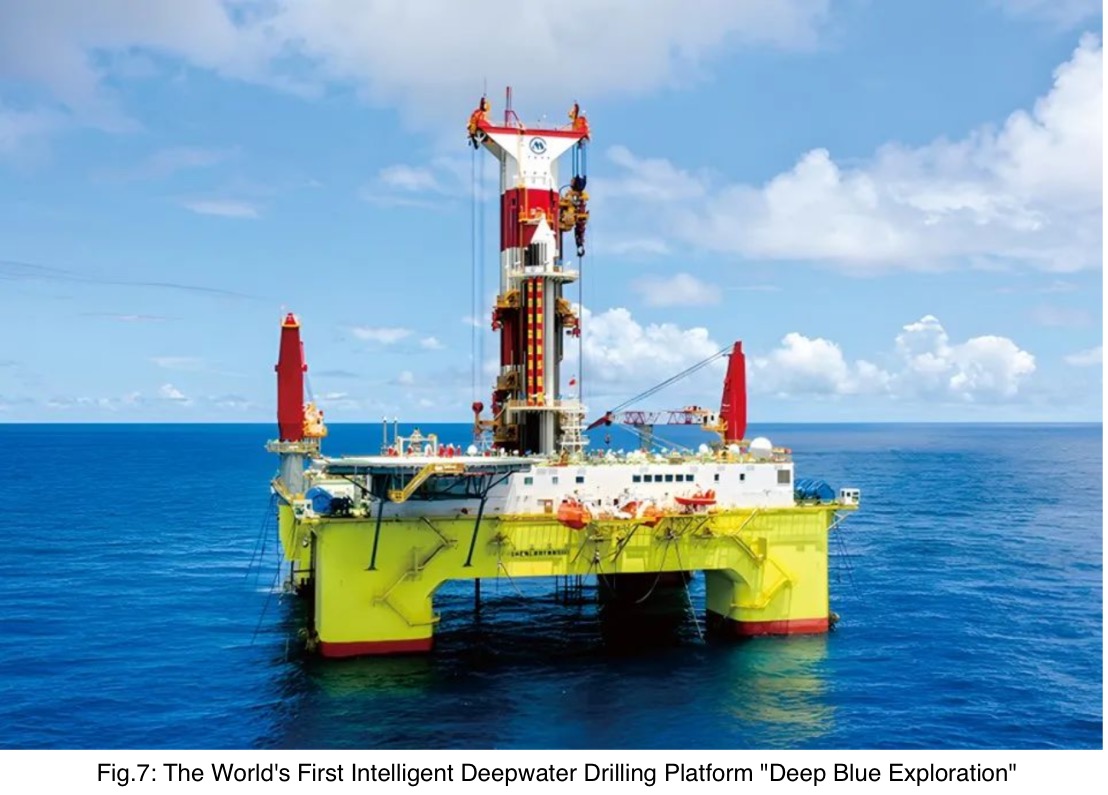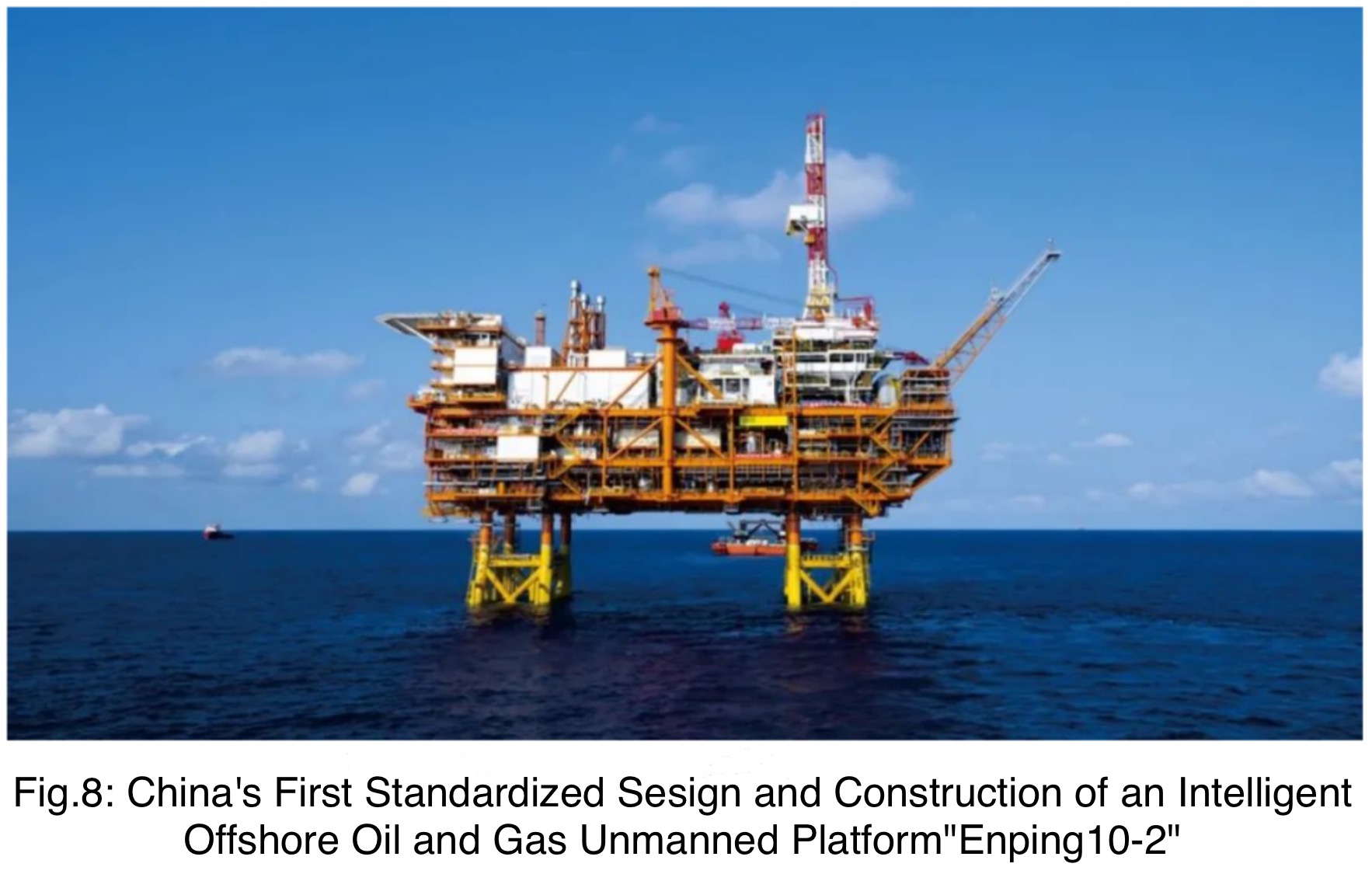Current Status and Trends of Deepwater Oil and Gas Drilling Technology and Equipment Development(Part 3)
3.2 Development Trends of Key Equipment for Deepwater Oil and Gas Drilling
3.2.1 Deepwater Oil and Gas Drilling Intelligent Drilling Rig
With the rapid development of technology, deepwater oil and gas drilling rig systems have transitioned towards intelligence. The intelligent drilling rig for deep water oil and gas drilling integrates multi-disciplinary technologies such as machinery, electronics, control, and information. It is an equipment that utilizes modern information technology and advanced automation control technology to comprehensively monitor, collect, analyze, and control the drilling process in offshore oil and gas drilling development. Intelligent drilling rigs can achieve automated control of the drilling process, prevent potential accidents and faults through real-time monitoring and prediction, thereby improving the efficiency and safety of drilling. At the same time, intelligent drilling rigs can reduce drilling costs, shorten well construction cycles, and achieve safe, intelligent, and efficient deepwater drilling operations through automated drilling processes and optimized management.
3.2.2 Deepwater Oil and Gas Floating Production Storage and Unloading Platform
In recent years, with the continuous promotion and deepening of offshore oil and gas drilling into the deep sea, the increase in the cost and risk of laying oil and gas return pipelines has become a major challenge faced by oil and gas drilling and development. To address this challenge, building an FPSO platform has become one of the most effective solutions.
An FPSO platform is a floating production device that produces, stores, and unloads oil and gas offshore. The construction of FPSO platform can greatly reduce the cost and risk of long-distance oil and gas return pipelines (Figure 6). Compared with traditional offshore oil field extraction methods, FPSO platforms can produce, store, and unload oil and gas offshore, greatly reducing the transportation costs and safety risks of oil and gas. However, the construction of the FPSO platform also faces some technical and management challenges. One is that the construction and operation of FPSO platforms require highly specialized technical and management personnel. Secondly, the equipment and facilities of the FPSO platform need to have a high degree of integration, and various systems need to coordinate and cooperate with each other, thus requiring more complex design and construction processes. Thirdly, the operation and maintenance of the FPSO platform also require meticulous management and maintenance work to ensure its long-term stable operation.
Despite some technical and management challenges in the construction of the FPSO platform, it has been widely recognized as an effective solution for offshore oil and gas development and is known as the "crown jewel" in the field of marine engineering. With the continuous innovation and improvement of technology, FPSO platforms will play a more important role in the future field of offshore oil and gas drilling.

3.2.3 Deepwater Oil and Gas Drilling Intelligent Platform
In 2021, "Deep Blue Exploration", the world's first intelligent deepwater drilling platform designed and built by China, was successfully drilled in the the Pearl River Mouth Basin in the South China Sea. The "Deep Blue Exploration" (Figure 7) is equipped with a 12 point high grip anchor positioning system, and is the world's first drilling platform to install an 89 mm diameter and the world's highest strength marine mooring chain. Its safety performance is super strong, and it can withstand nearly 16 levels of wind; The "Deep Blue Exploration" has a maximum operating depth of 1000 meters and a maximum drilling depth of 9144 meters. It is equipped with a new self-developed "intelligent operation and maintenance system", which has intelligent integration functions of "perception, analysis, and decision-making". It can collect production and operation data in real-time, achieve cloud processing, remote collaboration, and optimized decision-making. The platform is equipped with an intelligent blowout preventer system, which can automatically cut and close in extreme cases, ensuring safety and reliability. This platform can achieve simultaneous operation of the main and auxiliary wellheads, which can improve the comprehensive operation efficiency by 35% compared to the conventional single wellhead mode. At the same time, it is also the world's first intelligent deepwater drilling platform certified by Det Norske Veritas (DNV), equipped with the first hazardous area water treatment environmental protection device in China, which can achieve the separation of gas substances, oil, water, and mud substances, and minimize the discharge of sewage and hazardous water.

3.2.4 Deepwater Oil and Gas Unmanned Platforms
Offshore oil and gas unmanned platform, abbreviated as offshore unmanned stationed production platform, is a new type of offshore oil drilling and production facility. Its purpose is to provide a series of cost-effective and efficient solutions for the development of offshore oil and gas resources, with the characteristics of intelligence, unmanned, multifunctional, and remote control. Unmanned platforms are almost distributed in all oil and gas active waters around the world, such as Norway, the United Kingdom, and the Gulf of Mexico.
In 2019, China National Offshore Oil Corporation (CNOOC) piloted the unmanned transformation of wellhead platforms for the first time in the Panyu Oilfield block. This unmanned transformation of wellhead platforms will save the oilfield 20 million RMB. This is the first unmanned offshore platform in the Shenzhen area of CNOOC. At present, CNOOC has a total of 23 unmanned platforms in production, concentrated in the Bohai Sea, East China Sea, and western South China Sea (Figure 8), mostly simple wellhead platforms or wellhead platforms connected to the central platform bridge.

At first, these unmanned offshore platforms that met the standards of unmanned technology did not achieve true unmanned and intelligent management, and have always followed a manned management mode. Later, after feasibility analysis and research, functional testing, and intelligent transformation, an unmanned management system was established to simulate remote production, remote operation, and unmanned stationed stages. Only then did the intelligent unmanned management of the wellhead platform be achieved, effectively breaking through the bottleneck of cost reduction and efficiency improvement. Currently, offshore shallow water unmanned platforms have gained a lot of practical experience in the drilling and development of marginal oil fields, but there is no practical application of intelligent unmanned platforms in deep water oil and gas drilling. In the future, the application prospects of intelligent unmanned platforms in deep water oil and gas drilling development and production are very broad.
3.3 Suggestions for the Development of Key Equipment for Deepwater Oil and Gas Drilling
Deepwater oil and gas drilling is a high-tech, high-risk, and high-investment field that requires a series of key equipment to achieve, and the independent innovation ability of key equipment is very important.
(1) . At present, China still has a serious dependence on imports for key equipment in deepwater oil and gas drilling, especially for some core components and key equipment. Therefore, relevant industries should increase investment in equipment research and development, improve their independent innovation capabilities, and reduce the risk of relying on imported equipment.
(2) . With the increasing difficulty of deepwater oil and gas drilling, the requirements for equipment are also constantly increasing. Intelligent drilling rigs, drilling platforms, downhole equipment, and subsea production equipment need to be continuously optimized to adapt to changes in deep-sea environments and complex geological conditions. In the future, efforts should be made to promote the development of large-scale equipment manufacturing industries such as offshore oil and gas service industry and offshore engineering, strengthen equipment research and development, promote equipment intelligence, automation, and informatization, and improve equipment efficiency and safety.
(3) . Deepwater oil and gas drilling is a global industry, and governments and enterprises should actively participate in international cooperation, deepen exchanges and talent cultivation, formulate a series of equipment standards and specifications to ensure the quality and reliability of independent innovation achievements, and jointly promote the development and application of deepwater oil and gas drilling equipment.
(4) . The strategic layout of deep water oil and gas drilling equipment research should first face the major national energy needs, with the goal of expanding the exploration and development field, increasing oil and gas production, and improving the localization rate of key equipment and equipment for deep water oil and gas development as the breakthrough point, achieving green, safe and efficient development of marine oil and gas, consolidating the pillar industry of the marine economy, cultivating the high-end manufacturing industry of marine oil and gas, and driving the development of relevant high-tech equipment industry chains.
4. Conclusion
Under the guidance of national strategic planning and the joint efforts of scientific researchers, China has made significant progress in the localization of deepwater oil and gas drilling technology and key equipment. However, it is also necessary to have a clear understanding. Compared with developed countries, China still has a significant gap in deepwater oil and gas drilling technology and equipment, and the foundation is still weak. It is necessary to accelerate the improvement of scientific research and innovation system construction, and strive to build a deepwater oil and gas drilling research and development platform, strive to create a source of innovation in deepwater oil and gas drilling technology and equipment, thereby assisting in the smooth implementation of the marine power strategy and ensuring national energy security.
